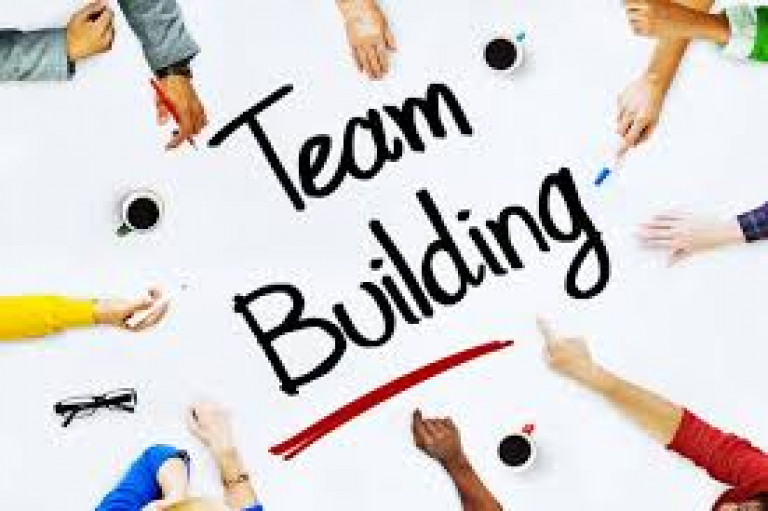Do you want to bring in and keep top talent for your company? Are you looking for ways to ensure your new hires are productive immediately? Then developing an effective onboarding process is key.
A well-designed new employee onboarding process can do many wonders for your business. Mainly, it’s a way to give your business a competitive edge in today's competitive employment market and position your new hires for success.
So in this article, we thought that it would be valuable to examine the essential components of a new employee onboarding program that will assist your new hires in getting up to speed quickly. We will go through everything you need to know to develop a successful onboarding program that will lead to success for your firm, from developing a plan to offering training and tools.
Importance of Having a New Employee Onboarding Program
A new employee onboarding program is a process that includes all the events, tools, meetings, and activities a new hire goes through to get acquainted with the company. It’s often overlooked in organizations, but doing it right can benefit your business greatly.
Here are some important reasons why you need a new employee onboarding program in your company.
1. Increases Employee Retention
New hires are more likely to feel engaged and dedicated to the company when they are made feel welcome, supported, and well-prepared for their new jobs. In fact, one study found that a great employee onboarding program improved employee retention rates by as much as 82%.
Having no onboarding program would be a poor alternative. However, a bad new hire onboarding process can make new workers feel disengaged and unmotivated, which raises the possibility of high employee turnover.
If you want to increase the likelihood of long-term retention and success inside the company, you should have a good onboarding process. This way, your new hires will feel valued and supported.
There are many other employee retention strategies and programs that will help your HR team and organization. But running a successful onboarding program is one of the simplest ways to ensure your new hires stick around for a long time.
2. Enhances Your Employer Branding
A new employee onboarding program is a perfect opportunity to demonstrate the company's culture, company's values, and mission. During onboarding, you can make a lasting impression on new hires by clearly communicating your employer branding.
New hires with a pleasant onboarding experience will likely become brand ambassadors and tell others about it online and offline.
A strong onboarding procedure can entice top talent by highlighting the company's dedication to the advancement and success of its staff. It also directly impacts employee satisfaction as a good onboarding program gives them a sense of ownership and pride in the organization they've joined.
This can be crucial for businesses competing for talent in a competitive employment market or relying on their reputation to attract new employees. Organizations can improve their branding, recruit great personnel, and keep it by investing in a positive onboarding experience.
3. Increases Employee Commitment
New hires are more likely to feel committed to the organization when they go through a favorable employee onboarding process. According to Bamboo HR, employees will feel up to 18 times more committed to their company after going through a thorough onboarding process.
A well-designed onboarding program can provide new hires with the resources, knowledge, and tools they need to thrive in their new positions, boosting their self-assurance and work output.
Moreover, great onboarding processes can make new workers feel assimilated into the company's culture and principles. This can also help boost their commitment to the company and level of job satisfaction.
4. Enhances Employee Productivity
By giving new hires the essential knowledge, tools, and resources, they may rapidly settle into their new jobs and begin supporting the company's objectives. New hires can learn about the organization's vision, values, and culture, as well as its company policies, processes, and expectations, with the aid of a thorough onboarding program.
With this information, new employees can better grasp their position within the company and feel competent to carry out their obligations.
An efficient onboarding procedure can also give new hires chances to network with their coworkers, form bonds with them, and become familiar with the aims and objectives of their team.
5. Results to More Profitability
We always look to activities like marketing and sales to boost company revenue. Yet compelling reasons exist to believe that a well-executed new employee onboarding program also impacts the company’s bottom line.
Northpass notes that companies have a 60% year-over-year improvement in revenue when there’s a structured onboarding process in place.
These are but some of the many other reasons why a new employee onboarding program is crucial if you want to have a healthy organization and happy employees. Now, let’s explore some practical tips when creating and running your employee onboarding programs.
Tips When Creating an Onboarding Program
Developing a great onboarding program is one way to ensure the success of new hires. Here are a few crucial suggestions to consider when creating an onboarding program that prepares your staff for success.
1. Introduce Your New Hires to Company Culture
Onboarding processes aren’t the only avenues to show your new hires where the water cooler might be or what kind of snacks they can get in the company fridge. One of the most crucial things you can do is introduce your new hires to your company culture.
Share with them your company’s core values and give insights and examples on how they can also embody that in their role.
You can also opt to gamify your company culture induction with a multiplayer quiz tool like TriviaNerd. We like this tool because it allows you to customize your questions and run them multiple times with as many employees as you’d like. You can even choose to do these corporate culture quizzes with all your employees occasionally to test and refresh their understanding of your team culture.
2. Make Introductions
A good employee program doesn’t just answer the question, “what do I do here?” It also answers the question, “who am I working with?”
Creating a good onboarding program requires taking the important step of making introductions in your organization. New hires must experience a sense of inclusion and warmth when they first join the organization.
Introductions to coworkers, managers, and other stakeholders can give new hires a sense of belonging and help them grasp the company's culture, values, and mission. Additionally, it can aid in removing obstacles to communication and promote collaboration, which are crucial components of a productive team.
Introduce new hires to important company members, including those they will collaborate with frequently, throughout the onboarding process. Gamify it by using an icebreaker tool like Quizbreaker.
To help new hires understand who is who in the company, you can also give them a list of names, positions held, and duties. But your new hires should also know what their new co-workers are like. To do this, have your team take a personality test assessment, and share it with your new hires. You can also get your new hire to do the same thing and share their results with the team too. This will help your team get to know each other deeper.
4. Prepare Colleagues For The New Employee
Your existing employees should also be able to warm up with the new blood too if you want to build teamwork in your team. This includes presenting the new hire to the team, interacting with the team members who will be working closely with them, and providing them with information about the new employee's role and responsibilities.
This creates a welcoming environment for the new employee and establishes the tone for a productive working relationship. Team members may be able to customize their interactions with the recruit and support them in their work by knowing more about their qualifications and experience.
Organizations can promote a favorable and encouraging workplace culture by preparing coworkers for the new employee's arrival.
5. Follow-Up
A follow-up step must be a part of every successful onboarding program to guarantee the success and development of new hires. To do this, the onboarding procedure can be made better by setting up frequent check-ins and feedback opportunities.
During the check-ins, the company can quickly address any problems or worries that the new hires might be experiencing. It also allows new hires to explain expectations, ask questions, and get feedback, improving their performance and work happiness.
Maintaining contact with new hires after onboarding promotes their sense of value, connection, and empowerment to succeed in their work. This helps them feel supported and engaged in the organization's culture and mission.
A Practical Way to Improve Onboarding: Personality Assesments
If you’re thinking of one seamless way to apply these tips, we recommend a new employee onboarding program activity using a personality assessment. Personality assessments are great ways to get people acquainted with one another as it provides solid points and information that help new hires and existing teams understand how they can work with one another better.
If you want to include a personality assessment in your onboarding program, try out our tool— WorkStyle. It’s a platform that takes your new hires and existing team members’ personality test results and aggregates them in one platform.
There are also some great tools to help make the process fun including icebreaker questions that will give people insight into a person’s personal interests and characteristics.
Visit this link to test out WorkStyle for your team now.
New Hire Onboarding Checklist
Do you need a new hire onboarding checklist for your new employee onboarding program? We’ve got you covered! Here are some things to include in your new hire onboarding checklist.
Make it official with HR
To proceed with the onboarding process, it is essential to ensure HR managers and teams have obtained written acceptance confirmation of the new hire's employment. This affirmation supports the employment choice and guarantees that all legal criteria are met.
Provide the official job role and inform all direct managers who will help execute the onboarding plan.
Get all paperwork signed
Compile all relevant paperwork for your new team member, including tax returns, emergency contact information, employment contracts, offer letters, and job offer statement sheet to speed up onboarding. It also lessens the possibility of delays or confusion by ensuring that new hires have all they need to get started.
Provide devices and equipment to new staff
It's crucial to identify the equipment the new employee will require to perform their job, purchase it in advance, and set it up to prepare them to begin working on their first day.
This might be a phone, computer, program, tool, or any other piece of equipment required for their particular job. The new employee will be able to get started immediately and will not experience any unnecessary delays or frustration by doing this.
Set up accounts and logins
It's important to create the new employee's accounts in the required systems and provide them with the proper login information.
This covers email, the workplace intranet, and any other programs or tools they will require to carry out their duties. This guarantees they have access to the resources they need to work effectively immediately.
Some tools that you might need to give your new hires access to include the following:
-
Communication Tools
-
Productivity Tools
-
Design Tools
-
Customer Relationship Management (CRM) Tools
-
Accounting and Finance Tools
-
Human Resource (HR) Tools
-
Security and Privacy Tools
-
Customer Support Tools
-
Marketing Tools
-
E-commerce Tools
Set up the workspace
Prepare the workspace of a new hire with all the tools, supplies, and furnishings they will need to begin working.
This includes any equipment they need for their job, such as their computer, phone, required software, office supplies, and so on. The new employee can begin their work quickly and effectively by having an appropriately set up workplace.
Schedule the new hire orientation
The organization should plan and conduct an employee orientation session to introduce new hires to its culture, regulations, and procedures and to acquaint them with their new workplace and job responsibilities.
Send a welcome email to your new employee
To express the company's excitement about the new hire's arrival, send a welcome email to them.
The email should include all relevant information to help the new hire prepare for their first day, including the start date, reporting time and place, dress code, and any other pertinent information.
Give your new hire a tour of the office
Give new hires a tour of the workplace and get them acquainted with their coworkers so they feel welcomed and at home. This can provide a good first impression and promote a feeling of belonging and community at work.
If you’re a virtual team, you can use this time to give your remote employees a tour of the essential remote work tools they will use to communicate with co-workers and accomplish their tasks. This could include:
Pair new hires with a peer mentor
Assigning a mentor can be quite helpful for a new hire's integration into the firm. Mentors can provide suggestions, help, and direction to new hires as they adjust to the workplace environment and their position within the company.
Send out a new employee announcement
When a new worker is employed, letting the rest of the business know is critical. This encourages open communication and a friendly atmosphere, which helps new hires feel more at ease and like valuable group members.
Schedule time for onboarding feedback
For feedback, to address any difficulties, and to ensure a smooth onboarding process, frequent check-ins with new staff are crucial.
Set up a 30, 60, and 90-day check-in plan
Regular check-ins with new hires enable you to keep track of their development, offer encouragement and comments, and set realistic objectives for their success.
Final Words
A well-designed and comprehensive onboarding program can be critical to an organization's success. It helps new employees feel welcome and valued and sets them up for success in their new roles.
Onboarding is not a one-time event but rather an ongoing process that should continue throughout the new hire's first few months on the job. By regularly checking in with new employees, providing opportunities for feedback, and offering ongoing training and development, companies can help new hires feel supported and valued, and ultimately, help them achieve their full potential.




